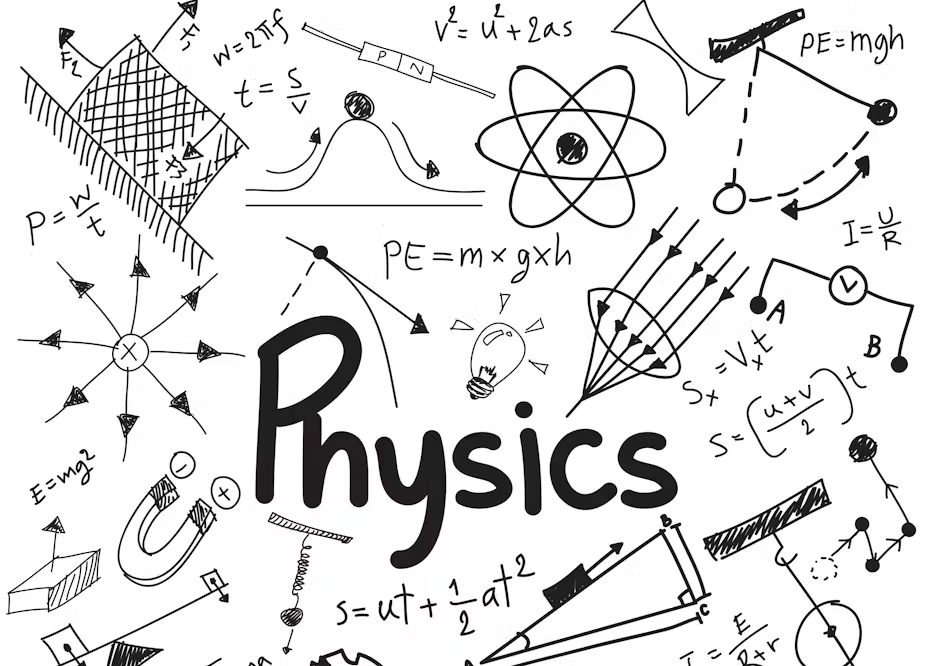Physics Course Syllabus
INTRODUCTION
Physics is the science that seeks to understand the fundamental principles governing the universe, from the motion of objects to the forces and energy that shape our world. This course introduces students to the foundational concepts of physics through engaging theoretical discussions, practical applications, and experimental work. Additionally, the course will be taught in English, enhancing the students' language proficiency and preparing them for global academic and professional contexts.
GENERAL OBJECTIVES
Understand and value the principles of physics and their applications in real-world scenarios.
Develop an analytical and questioning mindset to approach and solve problems logically.
Acquire skills to design and conduct experiments, analyze results, and draw evidence-based conclusions.
Foster effective collaboration and communication skills in scientific contexts.
Apply physics concepts and methodologies to everyday situations, fostering a deeper understanding of the world.
Build sensitivity toward the impact of physics in technological and environmental advancements.
Reflect on the learning process to make informed and reasoned decisions.
COMPETENCES / ABILITIES TO DEVELOP
Through this course, students will:
Build a foundational understanding of physics as a tool to explain natural phenomena.
Develop critical thinking skills, such as observation, analysis, synthesis, and argumentation.
Enhance organizational and collaborative skills through group work and projects.
Strengthen abilities in scientific inquiry and experimental design.
Cultivate creativity and adaptability in applying physics knowledge to solve complex problems.
METHODOLOGY
Student-guided inquiry.
Lectures and masterclasses.
Workshops and problem-solving sessions.
Laboratory experiments.
Unit-guided projects.
Class discussions and debates.
Analysis and synthesis of audiovisual materials.
CONTENT AND CONCEPTS
Unit 1: Measurements and Unit Conversion
Physical quantities and units.
International System of Units (SI).
Conversion of units.
Precision, accuracy, and significant figures.
Unit 2: Vectors
Scalar and vector quantities.
Representation of vectors.
Vector addition and subtraction.
Components of vectors and their applications.
Unit 3: Rectilinear Motion with Uniform Acceleration
Concepts of displacement, velocity, and acceleration.
Equations of motion under uniform acceleration.
Graphical analysis of motion.
Real-life applications and problem-solving.
Unit 4: Vertical Motion
Free fall and the effects of gravity.
Motion of objects thrown vertically upward.
Conservation of energy in vertical motion.
Experimentation and analysis of vertical motion scenarios.
EVALUATION PROCESS
Formative Evaluation
Guided discussions and student presentations to foster understanding and critical thinking.
Visible Thinking routines to encourage active engagement and reflection.
Group activities aimed at formulating conclusions from experiments and research.
Laboratory practices to consolidate theoretical knowledge through hands-on application.
Summative Evaluation
Written exams to assess understanding of key concepts.
Individual and group presentations to evaluate communication and analytical skills.
Essays or scientific reports to test the ability to synthesize and explain concepts.
Debates and peer reviews to evaluate argumentation and collaborative abilities.
Evaluation Criteria
Knowledge and understanding: 25%
Inquiry and design: 25%
Processing and evaluation: 25%
Reflection on the impact of science: 25%
RESOURCES
Technological
Laptop or tablet with internet access.
Bibliographic
Physics textbooks and supplemental materials aligned with the syllabus.
PAI guidebook.
Physical
Notebook, pens, and graphing paper for calculations and diagrams.
BEHAVIORAL RECOMMENDATIONS FOR THE PROPER DEVELOPMENT OF THE CLASS
Classes will be conducted in an atmosphere of mutual respect, adhering to the school’s rulebook guidelines.
Electronic devices are allowed only under teacher supervision.
Punctuality is essential; students should come prepared and ready to engage actively.
Collaboration and participation are encouraged to foster a productive and enjoyable learning environment.

- Teacher: Carlos Andres Garcia Giraldo
- Teacher: Jorge Alejandro Perez Garcia
- Teacher: Brandon Suarez Jiménez